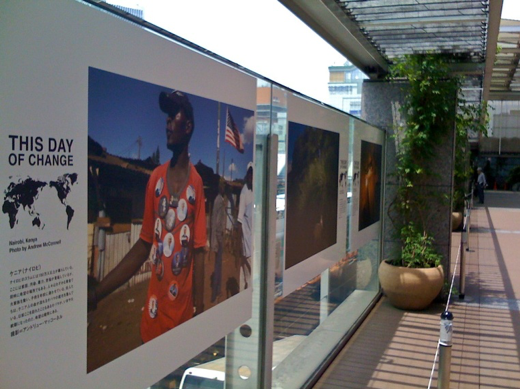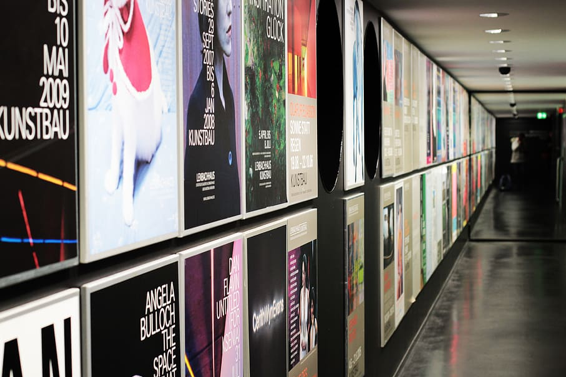Different Types of Large Format Printing
Let’s discuss the different types of large format printing. Large format printing is an old concept of print media and business advertisements. However, when we say “old,” we don’t mean to imply any decline in its demand. Large format printing is still a popular marketing tactic that helps businesses collect and gather the required amount of customer attention and sometimes more than that.
It is a great method for business exposure to clients and potential customers. Consequently, it is a lifeline of print media marketing for businesses, without which many companies may see a decline in customer interest in their products and services. Although you may be aware of the impact that large format printing can have on a business’s image and customer attention, did you know that there are more than several different types of it?

(Source)
Large format printing has seen continuous changes and upgrades that accompany many technological advancements in the print industry. From 18 to 100 inches, there is also a wide variety in large format printing. However, there are quite a few distinctions in the average and the best large format printing processes that enable a more excellent final result. From billboard and mall posters, large format printing is vital to any business that requires exposure to customers, markets, and certain regions. Here are the different types of large format printing.
What are the Types of Large Format Printing?
Aqueous Inkjet Printing
Regardless of the numerous large format printing techniques available throughout the commercial printing industry, aqueous inkjet printing is one of the most common. It has water solvent inks inside the printing machines. Applicable throughout graphics printing material and technical documents, aqueous inkjet printing is seeing a rise in demand due to the high-resolution and wide-format results that it can produce.
Compatible for indoor and outdoor materials alike, this large format printing method is a popular technique. Along with fast outputs, this printing type is ideal for:
- advertisement
- fine art showcasing
- graphic design
- lamination
- advertiser materials
- trade shows and photographic printing.
It is the most convenient printing method available today.
Flatbed UV-Based Printing
The Flatbed UV-based printing method is one of the latest printing techniques in the printing industry. As it is a UV-based printing technique, the ink-drying mechanism is quite different from that of the inkjet printers.
The ultraviolet rays in this printing method dry and solidify the curable ink to form perfectly on sheets of paper. While it may appear quite similar to the aqueous/solvent inkjet printing type above, the ink costs for Flatbed UV-based printing are relatively less expensive and reliable. In fact, outdoor images are printable without the need for lamination at all!

(Source)
Latex Printing
Large format printing has seen countless developments and printing improvements. Among those developments is the use of latex and resin-based inks that are ideal for indoor and outdoor printing applications. Not only are they durable, but their water-formulated resin-based and latex inks generate a lower environmental impact under the right printing style.
Despite being water-formulated, they produce images that are higher in quality in comparison to solvent inkjet printing. Therefore, they require no extra ventilation before presenting the results. With nearly all material compatibility, competitive pricing, and growing demand, businesses are now switching to latex printing for their large format printing needs.
Solvent Printing
If you require large format graphics design, you need solvent printing. Ideal for exterior graphics design, solvent printing is durable, versatile, and long-lasting. Nevertheless, you should know that experts suggest using special ventilation techniques to counter the hazardous ink fumes that are the result of this large format printing type.
For that reason, they are usually not suitable for daily use in offices. In fact, the most common places where you find the use of solvent ink printing machinery are fully equipped plants. The main reason for their popularity is that they require a low investment overall.
Dye-Sublimation Printing
Did you know the dye sublimation type of printing is so quick that the print dries up as soon as the printing takes place over fabrics, print rolls, sheets, or anything else? Well, it transfers the dye directly onto the material during the printing process using the special machinery technique. Such transfer puts the material in direct contact with ink/dyes; hence, drying up as soon as the printing takes place.
Highly compatible with polyester-coated and polymer products/substrates, this digital printing type is a widely popular large format printing option in the modern printing industry. However, it is more commonly suited to producing plaques, banners, signs, tea mugs, and cell phone covers.
Conclusion
Large format printing requires care and diligence to deliver consistent quality. In fact, you may find it hard to come by a print shop that can cater to varying large format printing needs or in high quantity. Don’t worry! Automation Graphics can help you become one of the amazing large format printing advertisers with modern machinery, exemplary services, and immense experience.
Give us a call at (646) 205-3037 or visit us in person at 519 8th Avenue 3rd Floor, New York, NY 10018.
Reference Links:
https://businesscasestudies.co.uk/7-types-of-large-format-printing/
https://brantinstore.com/three-types-of-large-format-printers/
https://www.360connect.com/product-blog/types-of-wide-format-printers/
